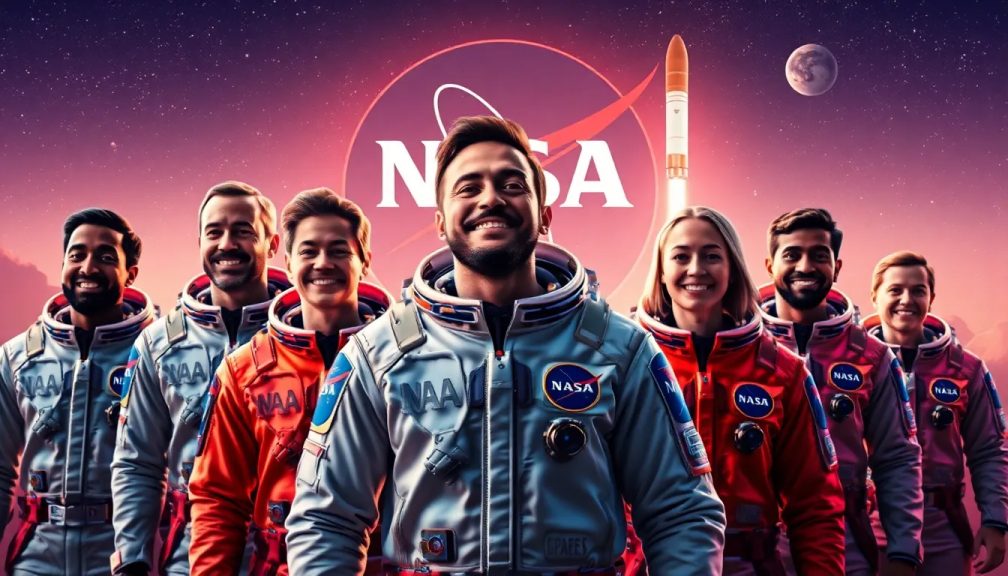NASA announces 24th astronaut class with former SpaceX member

NASA has taken a significant step forward in its quest for exploration by introducing its latest class of astronaut candidates. This announcement not only highlights the agency's commitment to space exploration but also showcases the diversity and talent in the field.
In a ceremony held at the Johnson Space Center in Houston, NASA revealed its 2025 astronaut trainee class, which includes an impressive mix of backgrounds and experiences. This new group marks a pivotal moment in the agency's journey, as they prepare for groundbreaking missions in low-Earth orbit, the Moon, and eventually Mars.
- Navigating New Frontiers: Introducing the 2025 Astronaut Candidates
- Meet the Candidates: A Diverse Class of Innovators
- The Road Ahead: Training for the Future
- Significant Milestones: The Legacy of NASA's Astronaut Classes
- The Future of Space Exploration: What Lies Ahead
- Engaging the Public: Connecting with Future Generations
NASA's recent selection of astronaut candidates is particularly noteworthy as it includes the first individual who has previously orbited Earth before officially joining the agency. The announcement on Monday unveiled a cohort comprising four men and six women, making it a historic class for the space agency.
The selection process was rigorous, drawing from a pool of more than 8,000 applicants. This competitive recruitment effort began in March 2024 and has culminated in the identification of ten exceptional individuals who embody the spirit of exploration and innovation.
Sean Duffy, the acting NASA administrator, emphasized the caliber of the candidates during the ceremony, stating, "We picked the best and the brightest, the most skilled, the best looking, the best personalities to take these 10 spots." This statement underscores the significance of selecting individuals who not only excel in their respective fields but also possess the potential to contribute to NASA's ambitious exploration agenda.
Meet the Candidates: A Diverse Class of Innovators
The 2025 astronaut class is distinguished not only by its impressive credentials but also by its groundbreaking composition. For the first time in history, this class features more women than men, a reflection of NASA's ongoing commitment to diversity and inclusion in the space sector.
The candidates represent a wide array of professions, including:
- Military officers
- Engineers
- A physician
- A scientist
This diverse background is expected to enhance problem-solving capabilities and bring fresh perspectives to future missions.
The Road Ahead: Training for the Future
Following their selection, the new astronaut candidates will undergo two years of intensive basic training. This training will prepare them for a variety of mission assignments, including those related to the Artemis program, which aims to establish a sustainable human presence on the Moon.
Moreover, NASA's Artemis program is not just about lunar exploration; it serves as a stepping stone for future missions to Mars and beyond. As stated by Duffy, "We are going back to the Moon, and this time we're going to stay. And from what we learn on our missions to the Moon, we're going to go to Mars, and we're going to go beyond, into the unknown."
Significant Milestones: The Legacy of NASA's Astronaut Classes
This new class represents the 24th selection of astronaut candidates since NASA's inception of the Mercury astronauts in 1959. Each class has contributed uniquely to the agency's legacy, pushing the boundaries of human knowledge and endurance in space. The progression of astronaut classes can be seen as a reflection of society's evolving views on space exploration and inclusivity.
With this class, NASA continues to build on a legacy of remarkable achievements. The diversity in expertise and backgrounds of the candidates not only enriches the astronaut corps but also aligns with global efforts to encourage more individuals from various backgrounds to pursue careers in science, technology, engineering, and mathematics (STEM).
The Future of Space Exploration: What Lies Ahead
As NASA eyes ambitious missions to the Moon and Mars, the role of these astronaut candidates will be pivotal. Their training will encompass a wide range of skills, including robotics, spacewalks, and survival training, all necessary for the challenges they will face in space.
In preparation for these future missions, NASA is also investing in technology and infrastructure to support this new generation of astronauts. This includes advancements in spacecraft design, life support systems, and mission planning.
Engaging the Public: Connecting with Future Generations
Nasa's announcement has generated considerable excitement among the public, emphasizing the importance of engaging the next generation. The selection of these candidates serves not only to inspire future astronauts but also to encourage young people to pursue careers in STEM fields.
Various outreach programs and educational initiatives are being developed to connect with students, schools, and communities. NASA's commitment to public engagement will play a vital role in fostering interest in space exploration and ensuring that diverse voices are represented in the future of space travel.
To further celebrate this momentous occasion, check out this insightful video about NASA's astronaut candidates:
The future of NASA and space exploration is bright, and with this new class of astronaut candidates, the agency is poised to continue its mission of exploration and discovery. The world eagerly watches as these ten individuals embark on their journey, representing hope, innovation, and the unyielding human spirit of exploration.




Leave a Reply